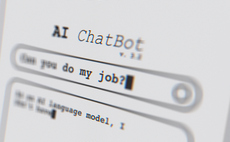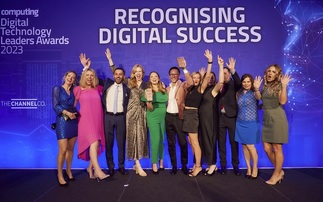
If ChatGPT is an 'iPhone moment' how should IT leaders respond?
At the end of 2023 a big question for IT leaders is how and where to start rolling out AI. It’s not as if they have a choice.
AI featured heavily in the 2024 predictions of almost all the CIOs we spoke to.
Pankaj Kane, chief engineer at Admiral Group, described ChatGPT as the "iPhone moment" for AI. "I strongly believe that this will change the way we use technology not just in our personal lives but also corporate lives. The hype is true," he said.
Charles Ewen, CIO of the Met Office, agreed that change is happening extremely fast. "I expect to see that impact play out at about a ratio of two months AI = one year Web 1.0. This is in part because of the ‘4th industrial revolution' effect... whereby existing internet advances combine with emerging AI capabilities to scale instantly."
Meanwhile, Lesley Salmon, CDIO of Kellanova, said gen AI is seeing companies reassessing their ‘traditional' AI investments, and Katie Gallagher, MD at Manchester Digital, added that it was already changing many roles, including in tech.
Love AI or hate it, tech leaders cannot afford to ignore it.
The low-hanging fruit
"ChatGPT, the amount Microsoft invested into OpenAI, and all the shenanigans with Sam Altman… naturally, the board are asking about AI", said Adam Miller, CIO at Markerstudy Insurance, speaking at a press briefing at a Nutanix event last week.
Miller said that implementation was still mostly at the exploratory stage at Markerstudy. He has established a group run centrally run from IT and is coordinating across at all the different businesses to identify opportunities, in partnership with Microsoft.
"We're going to go through this cycle of finding low-hanging fruit, and we've already found some very interesting use cases," he explained, adding that these tend to be internally focussed interventions rather than externally facing ones.
"For one process we've seen a 90% increase in efficiency by applying a large language model to it, so there are some real opportunities out there and we need to drive that."
Paul Petty, global head of infrastructure and platforms at construction company Laing O'Rourke, said his company was at a similar place to Markerstudy in terms of adoption.
"There's a big conversation around AI across our business," he said, pointing out that co-pilots are changing the way software developers are working. "But there's more than that. There's the AI augmentation piece, with AI assisted tools. There's a number of those in the strategic platform space, Salesforce, ServiceNow, SAP, etc, are bringing those in. And they are quite low-hanging fruit in terms of commercial cost and in terms of internal process efficiency."
At Laing O'Rourke LLMs are streamlining manual process such as bid writing, a "laborious and onerous" part of the process of applying for contracts. Bid writers need to gather lots of information from multiple sources, and they need to ensure bids are written within prescribed page limits, Petty explained.
"For example, there's a maximum of 120 pages, and they've got 133, and they've got two days before the bid's got to come out. How do they cut stuff out? Text summarisation tool and rewriting tools make it more efficient. People won't lose their jobs, but they can meet those deadlines without working long hours without work and experiencing extra pressure, they can get ahead of the curve."
Like Markerstudy, Laing O'Rourke is partnering with Microsoft in creating proofs of concept around other promising applications of AI.
"As you can imagine, Microsoft have been keen to assist us in some of those conversations and some of those PoCs that have been built by our own data team," Petty said.
But, he added, it's early days. There are many opportunities, but prioritising them is tricky. It makes sense from a business perspective to target areas that generate revenue, but how to standardise on an approach, and what's next once the low-hanging fruit has been picked?
"We need to do that planning so we can say where the next priority is, and how do we grow and scale this? At the moment it's quite bespoke with lots of small use cases."
For Michael Allen, head of infrastructure at shoemaker Clarks, it's all about the data, of which the company has an abundance.
"It's just driving more value from that data in ways that we have not easily been able to in the past. The ability to generate more meaningful reports in a less complex way."
As with any new technology, the key to introducing AI-based technology is to start small, create cross-functional teams, identify areas that will add real value, use what's already there, and don't be afraid to experiment.






















